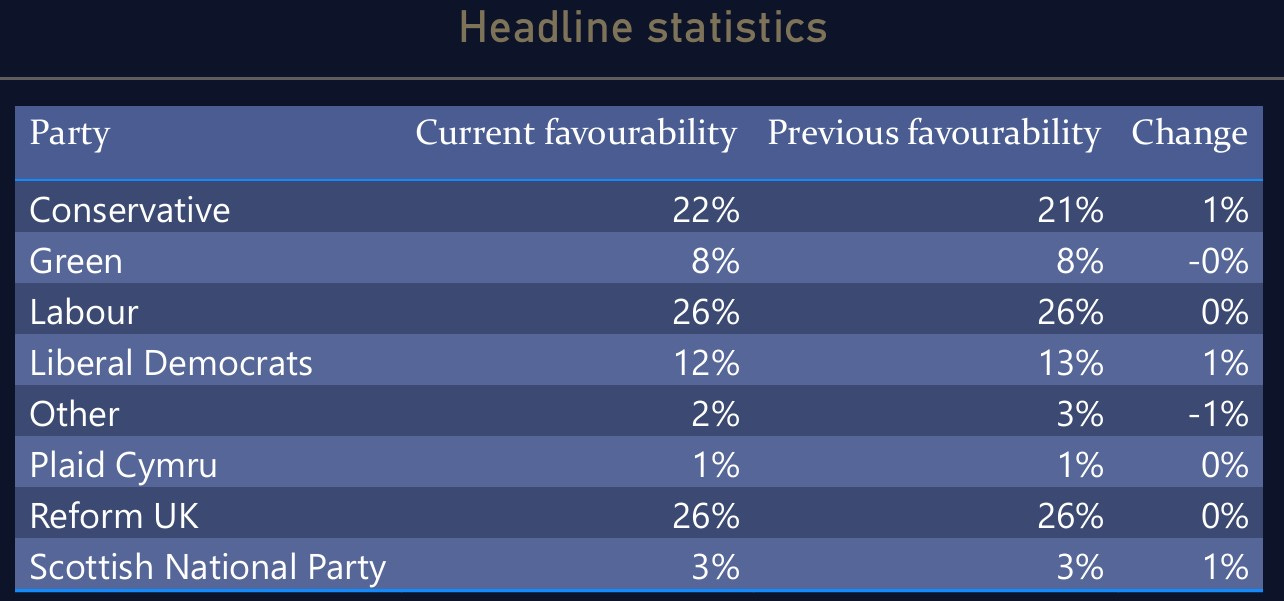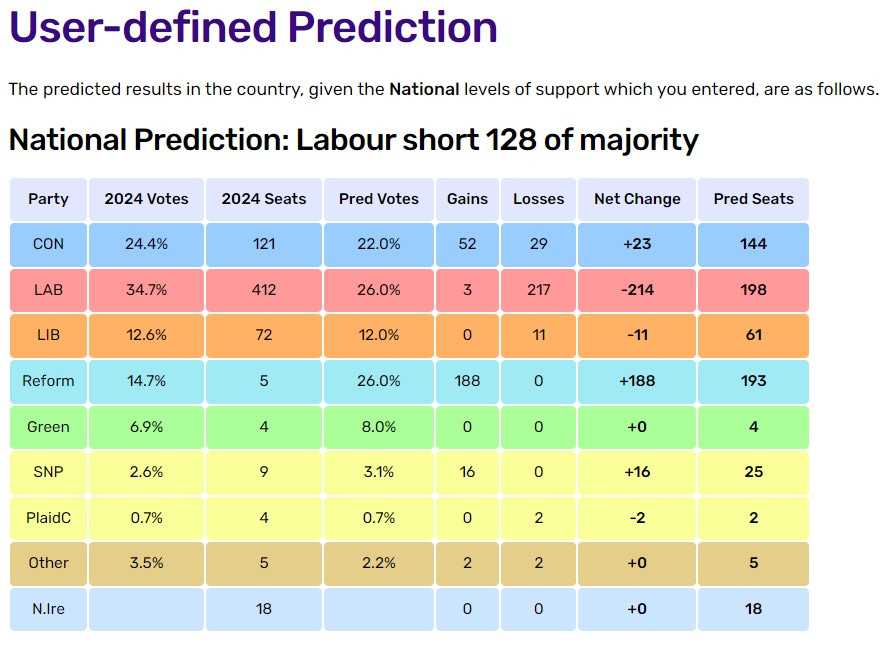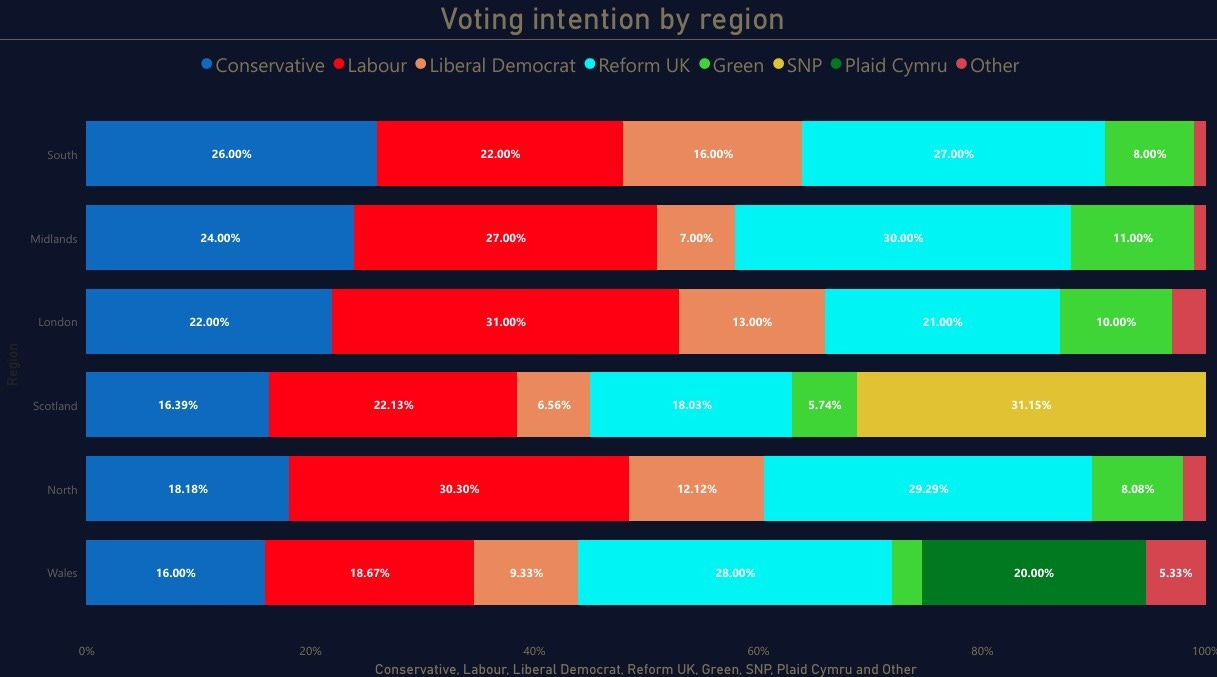Pollster: Opinium
Sample size: 2,050
Fieldwork dates: 26th-28th March 2025
Source
Not much seems to be changing week to week at the moment, but the continual creep up of the Conservatives in the polls will no doubt be reassuring to the leadership. The fact they are still third place and below where they were at the election, however, is an indicator of where the electorate still is - mistrustful and doubtful of the Conservatives’ viability of governing. But given that other polls show voters are not particularly convinced of Reform’s viability of forming a government, this may be an expression of discontentment rather than an outright rejection. Only time will tell.
Looking at Electoral Calculus, each party would likely take the following number of seats:
As with many other pollsters, this factors in the respondents who say they do not yet know how they will be voting or if they will vote - but this is significant because the original sample is 2,050 while the unweighted sample in the headline stat is 1,484 (and the weighted sample is 1,436). If as many as 600 (27.6%) are not sure how they are voting, there is still a lot of space for the polls to move if the parties are able to win over swing voters - or, importantly, if apathy increases and voters switch off altogether.
One thing that this poll does not do is break down to the granular level as much as some others, with the regions being grouped together at a basic level (“North” versus “North East/West”) and, with the age groups, the nuances of differences between 18-24s and 25-34s is obscured by the fact they are grouped into one.
Regional trends
Unsurprisingly, the Conservatives are performing well in the South and in the Midlands, though they are being completely outpaced in both regions and the North by Reform; in fact, the key statistic really is that Reform are ahead of the Conservatives in every region except for London, where they trail by only 1%. Likewise, Labour are only behind the Conservatives in every region but the South.
The Green Party, meanwhile, are performing remarkably well in the Midlands, and have actually overtaken the Liberal Democrats in that region - which means they may well have broken into the historically conservative centre of England and away from the inner cities where they excel.
Generational shift
The trends in age groups are what we always expect to see; the Conservatives performing better with older voters, and Labour performing better with younger voters, and a sliding scale marking the correlation between the two.
But, as is increasingly the case, Reform have outpaced the Conservatives in every age group except for the eldest (65+). In fact, amongst the youngest generations (18-34), Reform are polling twice as high as the Conservatives. As noted above, this may be a consequence of lumping the 18-24s in with the 25-34s, the nuances between which usually reveal more interesting generational trends.
Gender gaps
The Conservatives continue to perform better amongst women than men, consistent with other polls, and by quite a margin (22% over 18.5%), while Labour’s support amongst men and women continue to be at parity (24% and 24.75%).
A serious shift, however, is in Reform’s support amongst women; in fact, they are now the most popular party amongst women (but only marginally). This could be where Reform begins to break through and consistently overtake both traditional parties, if they consistently and continually perform really well amongst women.
Thank you for reading this short Poll Watch post, in which I look at and discuss the most recent public opinion survey. Please consider subscribing to and sharing this blog and, if you’re feeling particularly generous, subscribing to my paid content -(detailed research and policy proposals).







